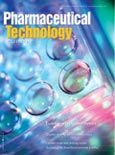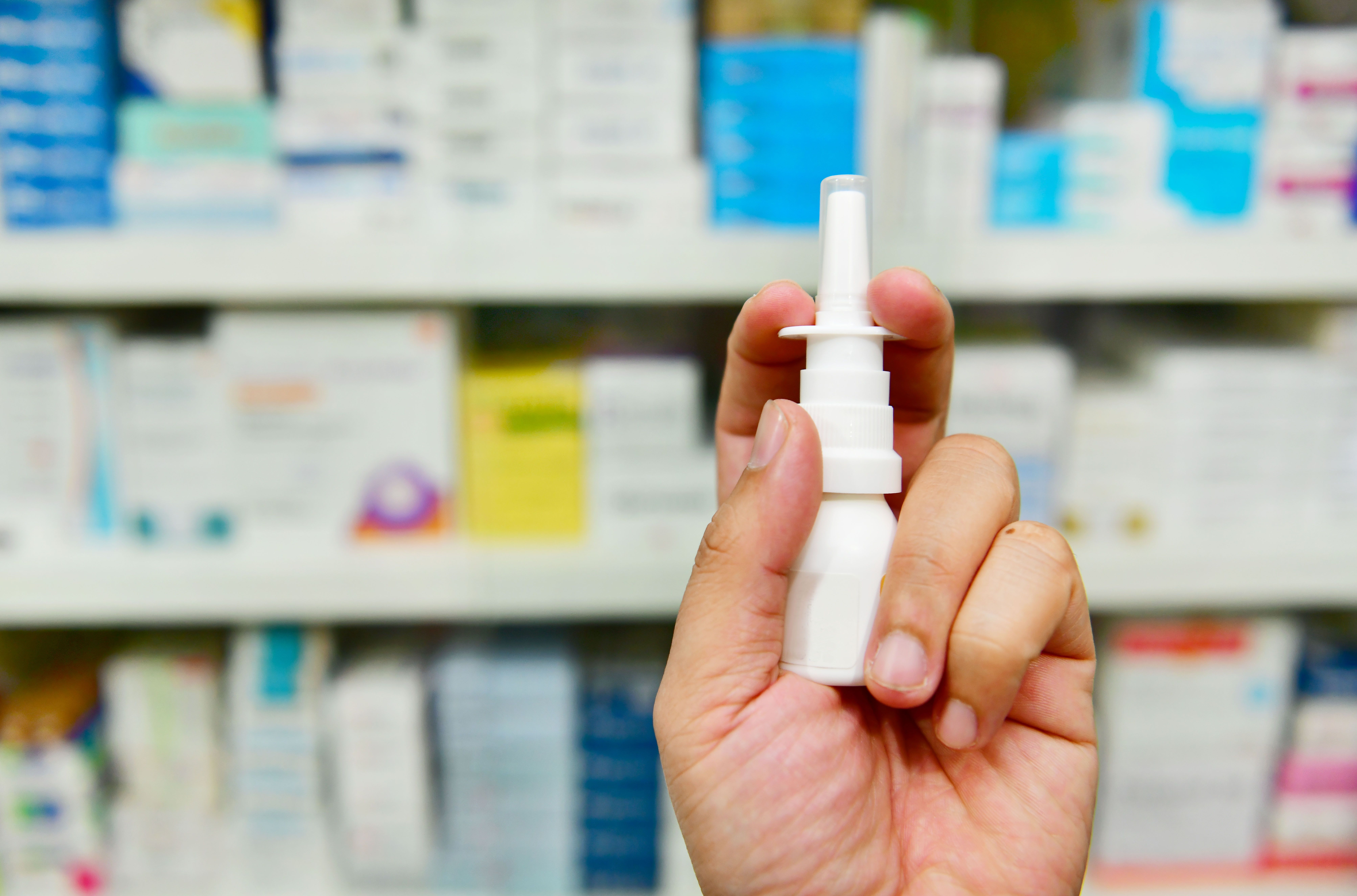News
Article
Pharmaceutical Technology Europe
Pharmaceutical Technology Europe
Selecting Lactose for a Capsule-Based Dry Powder Inhaler
Author(s):
Dry powder inhalers are a well-accepted dosage form for pulmonary drug delivery and a wide variety are either currently available or in development. This article examines a premetered, capsule-based multidose inhaler for which different qualities of a-lactose monohydrate were screened.
Image courtesy of author.
The lung, with its high surface area, is a physiological organ of interest for the non-invasive application of drugs - both in the treatment of local diseases such as asthma and chronic obstructive pulmonary (COPD) disease, and for the systemic delivery of drugs such as insulin and morphine. Different application devices, including nebulizers, metered-dose inhalers (MDI) and dry powder inhalers (DPI), are used to deliver drugs to the lungs. The phase-out of chlorofluorocarbon (CFC) propellants and the difficulties in reformulating MDIs with new hydrofluroalkane (HFA) propellants have created a growing interest in using DPIs as delivery devices for powdered medication.1
As low doses are typically needed for the oral inhalation of drugs, a physiologically acceptable, non-toxic carrier is used to dilute the drug and improve the powder flowability and, consequently, the dosing accuracy. α-lactose monohydrate is a well-known and widely used carrier for DPI applications.2 The efficiency of an inhaler is largely dependent upon the drug and drug particle size in use,3 the type of device used to deliver the powdered material4 and the quality of lactose. Different types and qualities of lactose may influence the performance of a DPI,5 and the lactose quality needs to be carefully selected.

Figure 1: The FlowCaps inhaler.
In this article, the effect of different lactose qualities on a capsule-based, multidose DPI (FlowCaps; Hovione SA, Portugal), has been analysed. The DPI consists of 6 plastic components and several metal parts (Figure 1). Prefilled capsules are stored in the capsule reservoir, one of which is forwarded into the inhalation position when the inhaler is upright. The inhalation capsule is cut on the top and the bottom with stainless steel blades when turning the mouthpiece; the powder is then available for inhalation.
Different lactose qualities in combination with budesonide (as a hydrophobic model drug) and salbutamol sulphate (as a hydrophilic model drug) were screened for their potential use with the DPI. The suitability of the lactose quality for potential use was verified by content uniformity testing and analysis of the aerodynamic particle size of the released aerosol.
Materials
Lactose was purchased from three different manufacturers (Table I). Micronized budesonide (Farmabios srl, Italy) and salbutamol sulphate ([SBS] AstraZeneca, Germany) were used as model drugs; that is, drugs used as an example, although a variety of drugs could have been used. Methanol and acetonitrile were of chromatography quality (Karl Roth GmbH, Germany).

Table I: Lactose and drug physicochemical characteristics.
1-heptanesulphonic acid was purchased from Sigma Aldrich (Germany); the water used had been distilled twice.
Methods
Particle size distribution. The particle size distribution of the drugs and the lactose was determined with a laser diffractometer (Sympatec GmbH, Germany). The powders were measured after dispersion by compressed air (2 bars).
Specific surface area. The specific surface area was measured using the gas adsorption method with a Gemini 2360 (Micromeritics GmbH, Germany). The sample preparation was done according to a fixed protocol for 12 h under vacuum at 35 °C (VacPrep 061; Micromeritics GmbH).
Particle roughness. The particle roughness was estimated by using an image analysis system (Leco 2001; Leco Instumente GmbH, Germany). The lactose particles were visualized with an optical microscope. Particle dimensions were evaluated using the Leco 2001 software and the roughness was calculated according to Equation 1.

Powder density. The density was determined with a helium pycnometer (Accupyc 1330; Micromeritics GmbH).
SEM. Scanning electron microscopy (SEM) pictures were taken using a Philips XL 20 (Philips, The Netherlands). Samples were fixed on an aluminium sample holder with conductive double-sided adhesive tape (Leit-Tabs; Plano GmbH, Germany) and coated with gold in an argon atmosphere (50 Pa) at 50 mA for 50 s (Sputter Coater; Bal-Tec AG, Liechtenstein).
HPLC. A mixture of 75% methanol and 25% water (V/V) was used as a solvent for the budesonide samples. The content of budesonide was determined using a validated high-performance liquid chromatography (HPLC) method using an RP18 (LiChroCART 125-4, LiChrospher 100; Merck, Germany) column and a mixture of 45% acetonitrile and 55% water as the mobile phase. Detection was performed at 243 nm.
Water was used as the solvent for the salbutamol sulphate assay. The content of SBS was also determined by reverse-phase (RP)-HPLC. A mobile phase consisting of phosphate buffer, methanol, water and 1-heptanesulphonic acid was used. Detection was performed at 280 nm.
Preparation of the powder blends. The powder blends (1.1% m/m drug content) were manufactured according to a fixed protocol:
- sieving
- weighing using the sandwich method
- mixing for 30 min
- sieving again
- mixing for 30 min
- final sieving
- testing for homogeneity by analysing 10 random samples (20 mg of powder per sample).
Powder blends were accepted as homogeneous and used for further testing when the relative standard deviation (RSD) was less than 3%.
Dose content uniformity. Size 4 hydroxypropyl methylcellulose (HPMC) capsules (Shionogi Europe BV, The Netherlands) were filled with exactly 20.0 mg of the powder blend corresponding to a drug content of 220 µg/capsule. The drug content of each delivered dose was assessed with the dose uniformity sampling apparatus as described in the European Pharmacopoeia (Ph. Eur.).6 The pressure drop across the device was adjusted to 4 kPa, which resulted in an air flow rate of 30 L/min through the device. 10 single doses were analysed per batch.
Fine particle fraction. The aerodynamic particle size distribution was determined with an MLI multistage liquid impinger (Erweka Appartebau GmbH, Germany) at an air flow rate of 30 L/min through the device. Drug deposition on the single stages of the impinger was chemically assayed and the fine particle fraction was calculated as the amount of particles <5 µm.
Results and discussion
Physicochemical properties. The physicochemical characteristics and differences of the lactose are summarized in Table I. Inhalac 70 exhibited the largest average particle size (350%550% undersize) of 212 µm and the smallest BET surface area (Figure 2(b), Table I), whereas Inhalac 120 (Figure 2(a)) had a smaller average particle size (150 µm). Respitose 325 M and Lactohale 200 showed the smallest average particle size (350%: 60.6 µm and 83.0 µm, respectively [Figures 2(c) and (e) and Table I]), whereas Lactohale 100 and Pharmatose 110M had average particle sizes of 128.2 and 121.6 µm, respectively (Figure 2).

Table II: Number of doses needed to empty the powder from the FlowCaps inhaler (average of 30 capsules) and Figure 2: Characterization of the lactose qualities using laser diffraction: (a) Inhalac 120, (b) Inhalac 70, (c) Lactohale 200, (d) Lactohale 100, (e) Pharmatose 325, (f) Pharmatose 110.
The differences in true density and surface roughness were only marginal and not significantly different, as expected for large crystals of the same material. The specific surface area varied between 0.07 m2/g (Inhalac 70 and 120) and 0.22 m2/g (Lactohale 200), which was in relation to the particle sizes of the lactose qualities.
Small differences in the surface texture and crystal form of the lactose particles could be seen on the SEM photographs (Figure 3). The Inhalac 70 consisted of agglomerated smaller lactose particles with minimal fines content; Inhalac 120 had a low fine content but showed more regular-shaped crystals, as did the other entities. Pharmatose and Lactohale contained small lactose particles as well.

Figure 3: SEM photographs taken from the analysed lactose: (a) Inhalac 70, (b) Inhalac 120, (c) Pharmatose 110M. (Chart continued below)
It should be noted that all lactose compounds under investigation can be used in dry powder inhalation formulations with respect to their shape, size and size distribution. Although they differed in particle size distribution, average particle size and fines content, all appeared capable of passing the cut capsule slit and were, therefore, used for further testing.

Figure 3 continued: (d) Pharmatose 325 M, (e) Lactohale 100, (f) Lactohale 200 (continued again below).
Delivery of inhalation powder. The manufactured powder blends filled size 4 HPMC capsules and were emptied with the official sampling apparatus of the Ph.Eur. Initially, the emptying behaviour of the capsules upon inhalation was observed visually. Four of the selected lactose entities proved to be inappropriate for use with the FlowCaps inhaler as the capsules did not empty reproducibly (Table II). Pharmatose 110, Lactose 100, Inhalac 70 and 120 needed 10 or more actuations for complete powder delivery from the capsule. These lactose compounds had an average particle size of >100 µm, which are too large and exhibit too high a degree of mass inertia to be entrained by the air. Although the screened lactose compounds were unsuitable for use with the FlowCaps DPI, they may work with other types of DPIs.

Reproducible delivery of the powder from the capsules was possible with fewer than three inhalations using Pharmatose 325M and Lactohale 200 and, therefore, only these were used in further studies to assess the content uniformity of the delivered dose and the fine particle fraction of the powdered medication.
Content uniformity. The results of the content uniformity tests are summarized in Figure 4. The measured delivered dose was normalized to the average of the 10 single delivered doses (=100%) and the limits of ±25% and ±35% of the average delivered dose were calculated. According to Ph.Eur., 9 out of 10 single doses must lie between ±25% of the average and 1 dose is allowed to fall between ±25% and ±35% of the average delivered dose.9 Values outside ±35% are only tolerable in justified cases.6 The US regulatory authorities demand tighter limits for the content uniformity, specifically ±20% and ±25% of the labelled dose.7

Table III: Aerodynamic properties of the investigated drug/lactose blends.
As shown in Figure 4(a) and (b), the powder blends with salbutamol sulphate easily match the set criteria for content uniformity according to both Ph.Eur. and the US Food and Drug Administration (FDA) requirements; the doses were delivered consistently and were close to regulatory requirements.
Content uniformity of the budesonide mixes exhibited different behaviour. Higher variations in the delivered dose, together with higher device retention, was observed. Accordingly, the tested blends did not comply with either FDA or Ph.Eur. standards. The particle size distributions of the salbutamol sulphate and budesonide used in this study were very similar, and the drugs were used in the same concentration (drug:lactose ratio 1:90.9). This effect is attributed to the different surface energies of the hydrophilic drug SBS and the hydrophobic drug budesonide, resulting in different blend properties (Figure 3(g) and 3(h)).
SBS is more uniformly distributed on the lactose surface with few agglomerates visible, whereas it exhibits higher cohesion in the budesonide and, accordingly, a higher agglomeration tendency. This in turn leads to poorer flowability and dispersibility of the budesonide blend and increased variations in the delivered dose. Accordingly, a formulation with a budesonide/lactose blend needs to be more thoroughly developed with respect to the budesonide size distribution and the lactose quality. There were almost no differences in the dose uniformity patterns between the two types of lactose used and they principally show the same trend with respect to the drugs.

Figure 3 (continued): (g) Budesonide/Lactohale 200 blend, (h) Budesonide/Pharmatose 325 M blend, (i) SBS/Lactohale 200 blend, (j) SBS/Pharmatose 325 M blend.
Fine particle fraction. The results of the aerodynamic testing are summarized in Table III and Figure 5. Again, large differences in the performance of the powder blends was detected between salbutamol sulphate and budesonide. In addition, the aerosolization behaviour of the blends was shown to be dependent upon the lactose quality used.

Figure 4: Content uniformity of blends.
Generally, the fine particle fraction (percentage of delivered dose <5 µm) was higher with the hydrophilic salbutamol sulphate (43.6% and 14.2% with Lactohale 200 and Respitose 325M, respectively) than with budesonide (20.8% and 12.3%, respectively). This is attributed to the partly agglomerated budesonide in the mixture, which leads to lower aerosolization efficiency and higher deposition in the inlet and stage 1 of the impinger.
The SBS is more easily detached from the lactose surface, resulting in less impaction on the upper impinger stages and a higher deposition on stages 3 and 4 and the filter. In addition, the slightly higher average particle size and a higher fraction of >3 µm of the salbutamol sulphate may lead to better deaggregation and detachment of the drug particle from the lactose surface.

Figure 5: Aerodynamic behaviour of the SBS and budesonide blends with the lactose in a per drug and a per lactose comparison.
A comparison of how different lactose qualities performed with SBS shows that the Lactohale 200 blend is more efficient than the Respitose 325M. A look at the size distribution data and the SEM pictures reveals that the used Lactohale quality still contains a considerable amount of fines (310% of ;∼12 µm) compared with an x10% value of 31 µm for the Respitose. It is possible that the higher fines content occupies the high energy surface sites of the lactose crystals and enables easier detachment of the micronized drug particles.8 The same applies to the budesonide mixtures where the observation of the lower fine particle fraction with the Respitose is the same. Differences in the surface texture of the two lactose qualities could not be visually determined.
Conclusion
In this study, the influence of raw materials used in an inhalation powder together with the DPI was investigated. The results suggest that the lactose needs to be carefully selected for the efficient delivery of a drug from the inhaler. In the case of the FlowCaps DPI, lactose with an average particle size between 60-90 µm was found to be most suitable for reproducible powder delivery. Additionally, a small proportion of fine lactose particles appeared to shift the fine particle fraction to higher values.

References
1. I.J. Smith and M. Parry-Billings, "The Inhalers of the Future? A Review of Dry Powder Devices on the Market Today," Pulmonary Pharmacol. Ther. 16, 79-95 (2003).
2. H. te Wierik and P. Diepenmaat, "Formulation of Lactose for Inhaled Delivery Systems," Pharm. Technol. Eur. 14(11), 47-52 (2002).
3. N.Y.K. Chew and H.K. Chan, "Influence of Particle Size, Air Flow and Inhaler Device on the Dispersion of Mannitol Powders as Aerosols," Pharm. Res. 16, 1098-1103 (1999).
4. M. Vidgren et al., "Effect of Powder Inhaler Design on Drug Deposition in the Respiratory Tract," Int. J. Pharm. 42, 211-216 (1988).
5. H. Steckel, "Inhalation Powders - A Simple Dosage Form for Pulmonary Delivery?" Swiss Pharma. 9a, 15-28 (2002).
6. Section 2.9.18, European Pharmacopoeia, 4th Edition (EDQM, 226 avenue de Colmar BP 207, F-67029 Strasbourg, France, 2002).
7. www.fda.gov/cder/guidance/2180dft.pdf
8. J.N. Staniforth, "Improvement in Dry Powder Inhaler Performance: Surface Passivation Effects," Aerosol Sci. Technol. 22(4), 346-353 (1995).

Newsletter
Get the essential updates shaping the future of pharma manufacturing and compliance—subscribe today to Pharmaceutical Technology and never miss a breakthrough.




